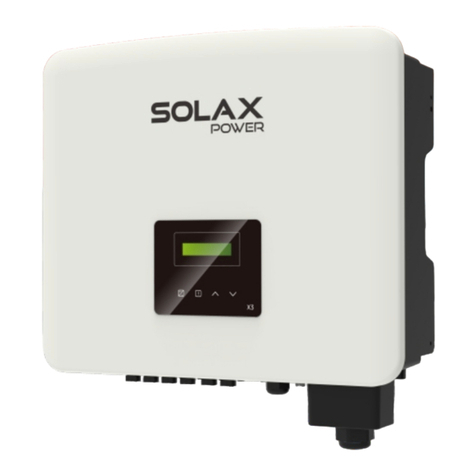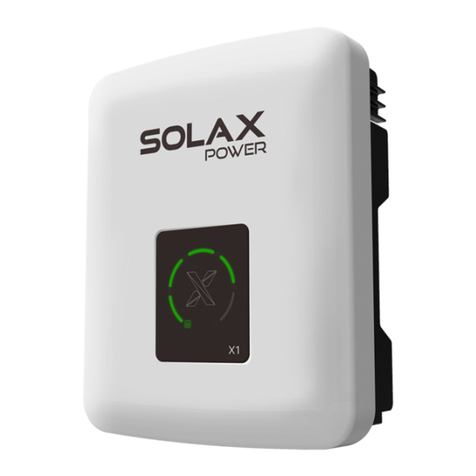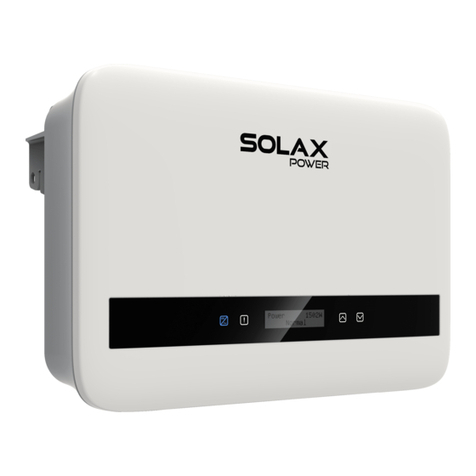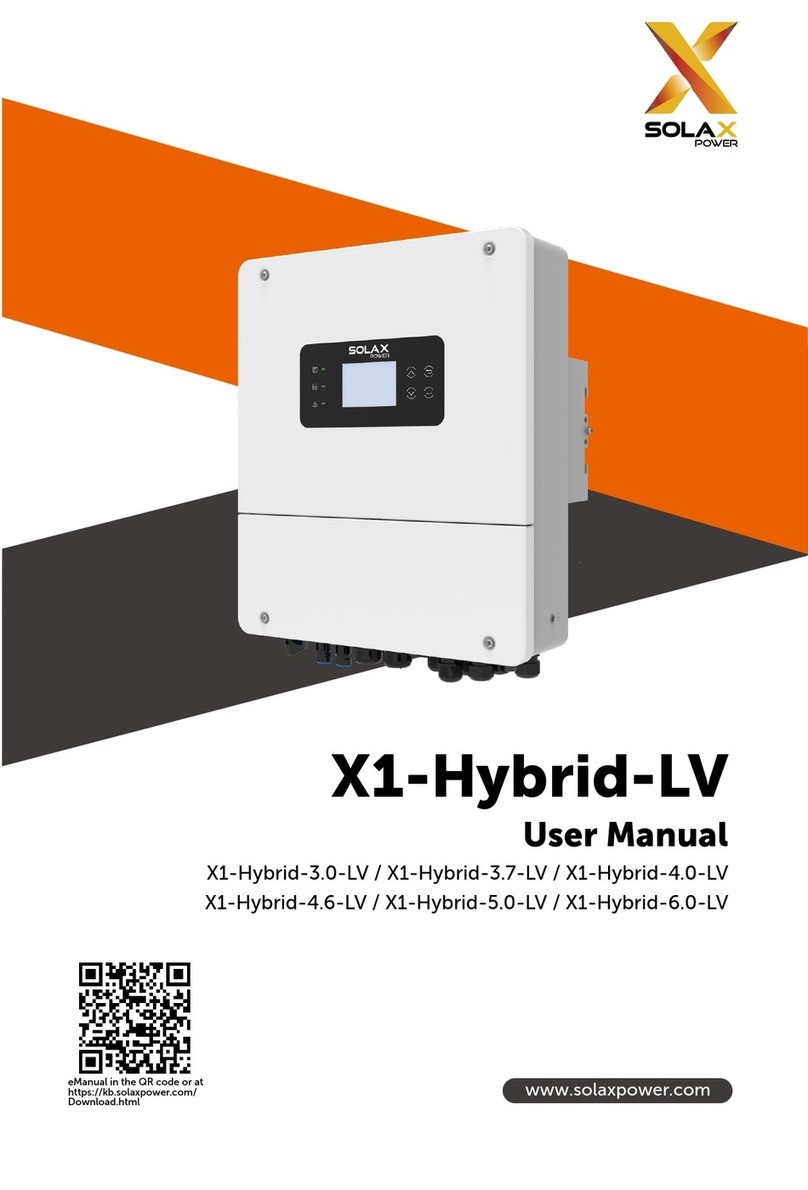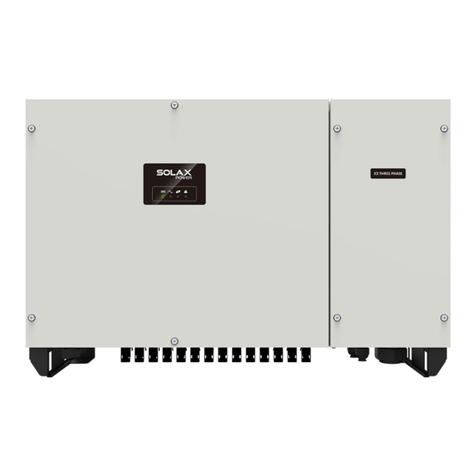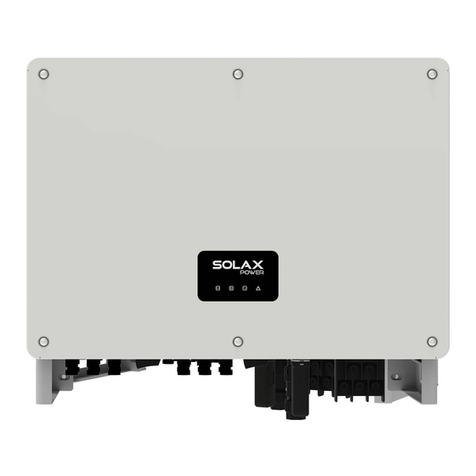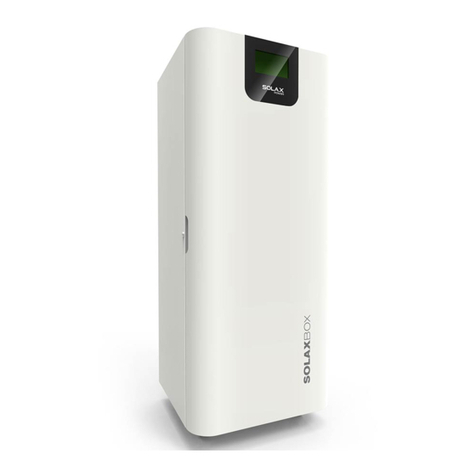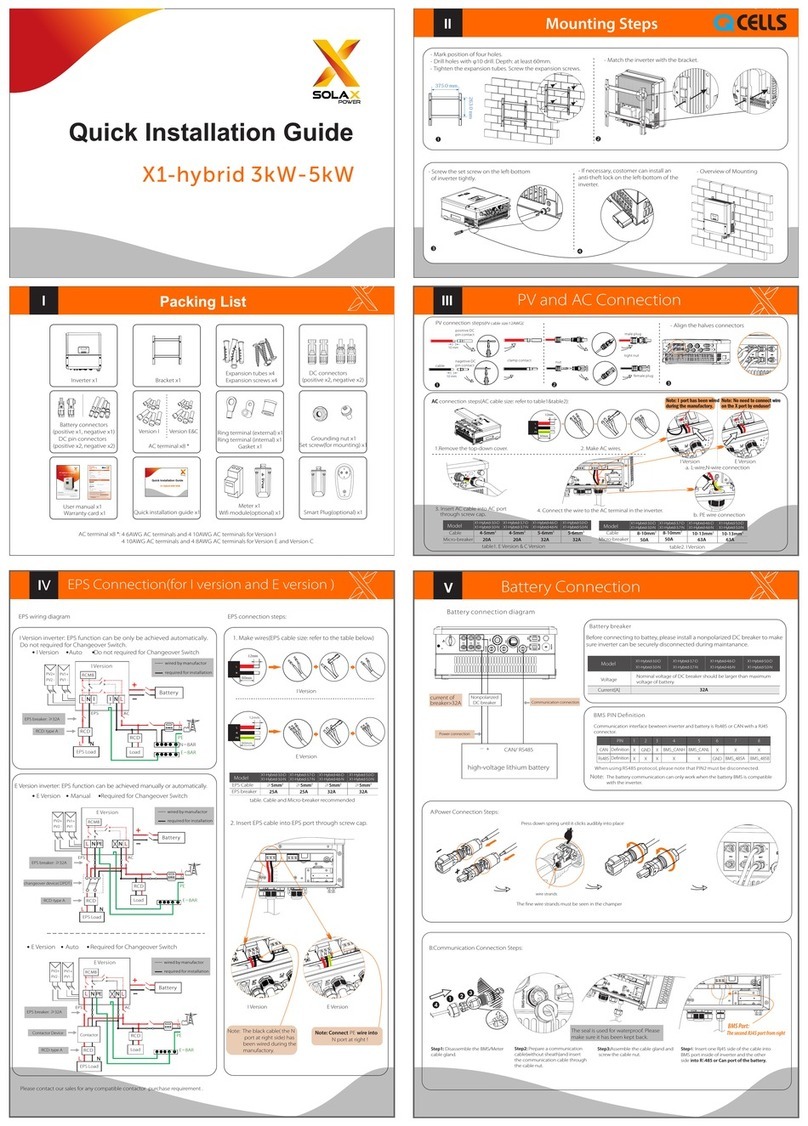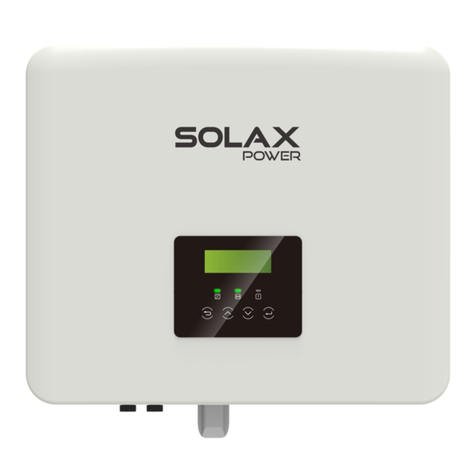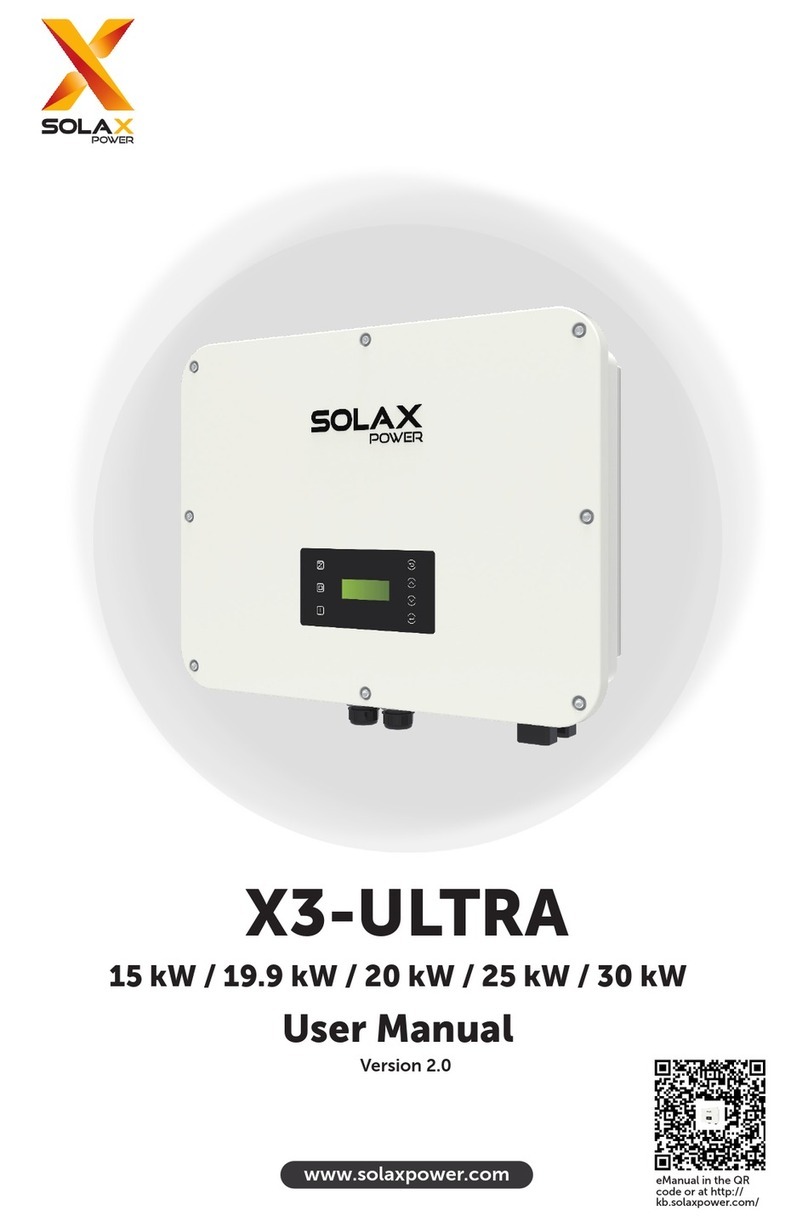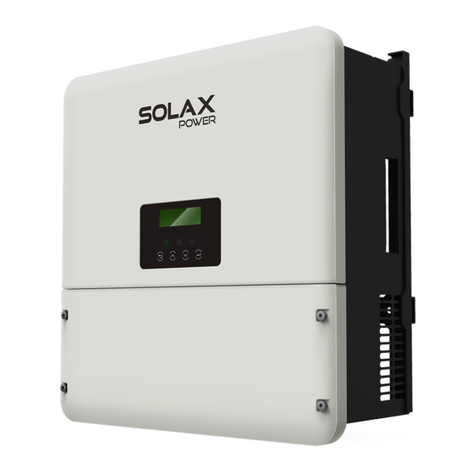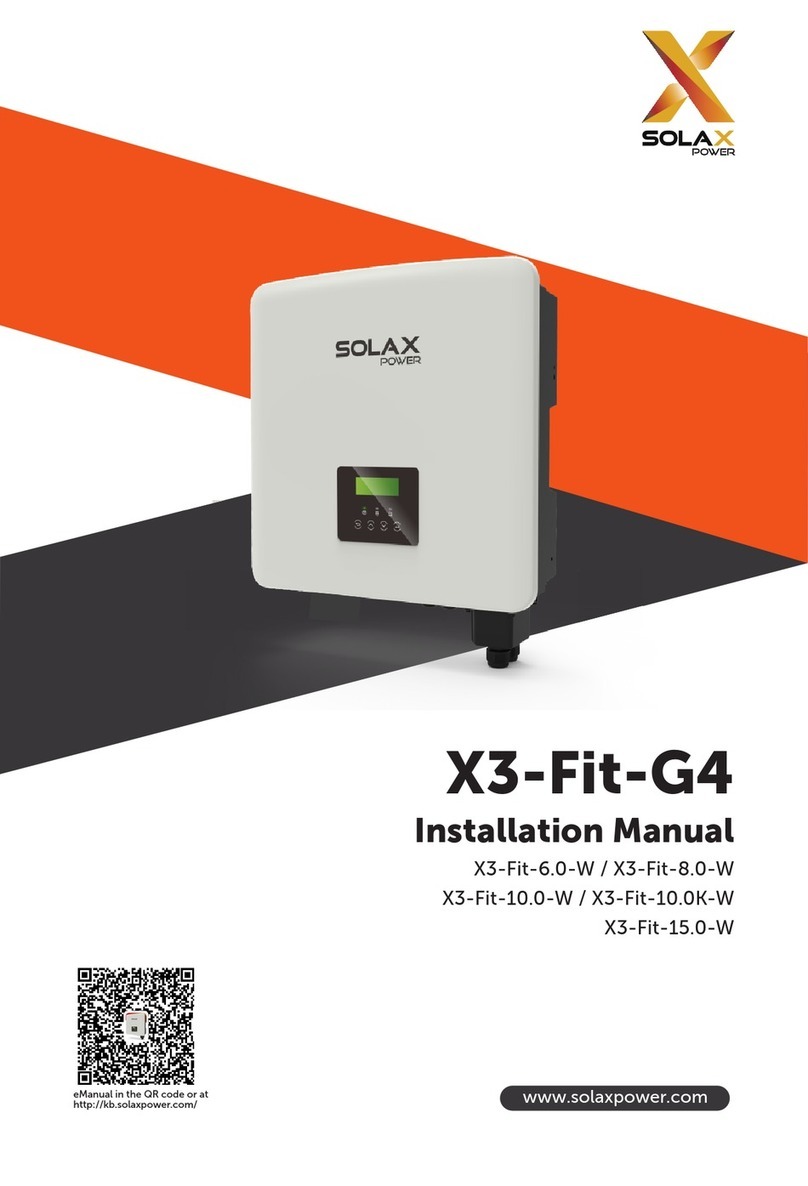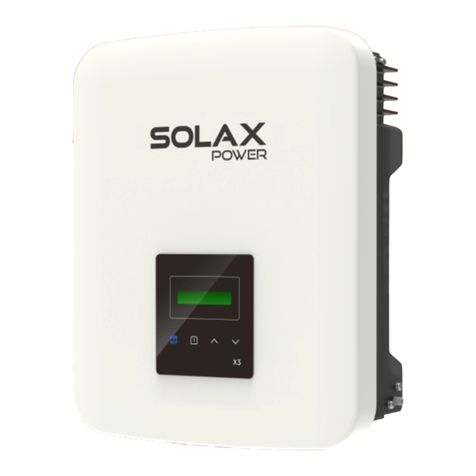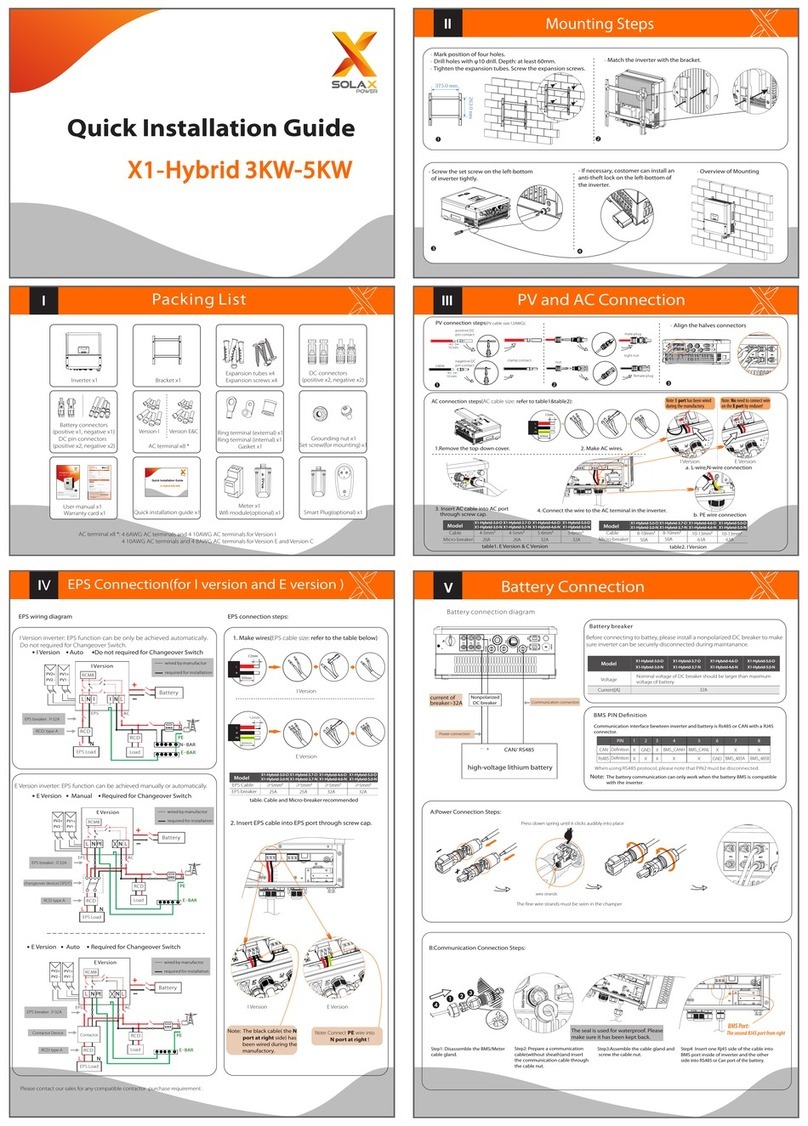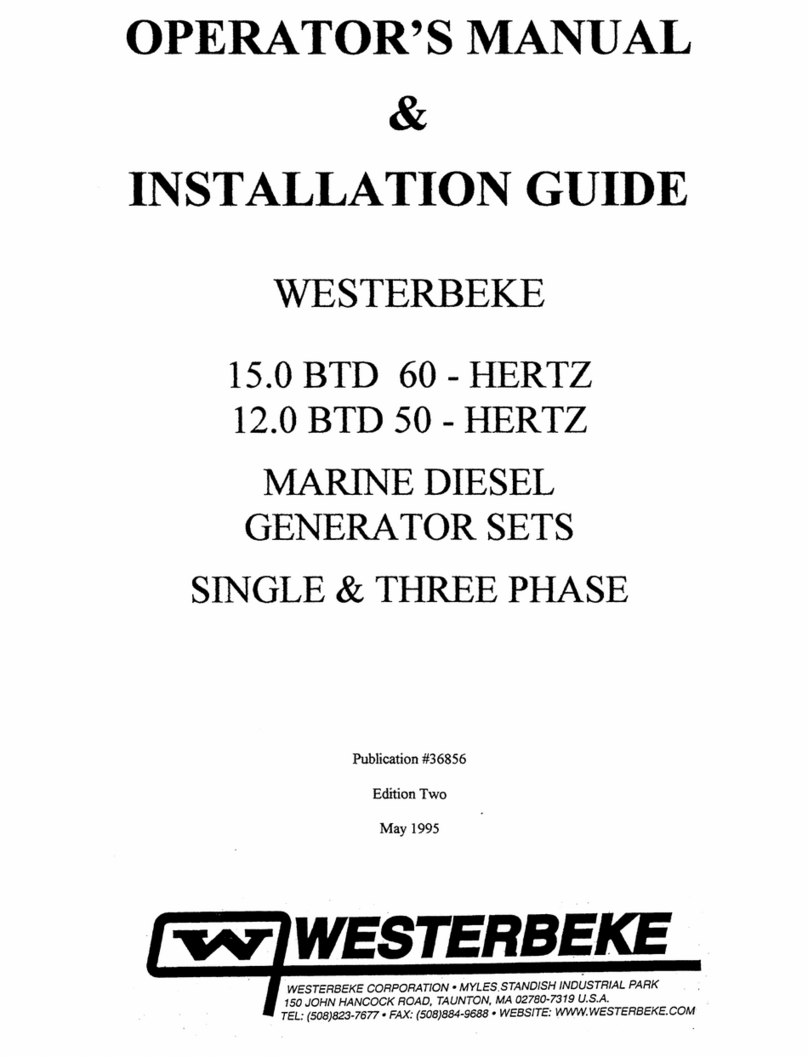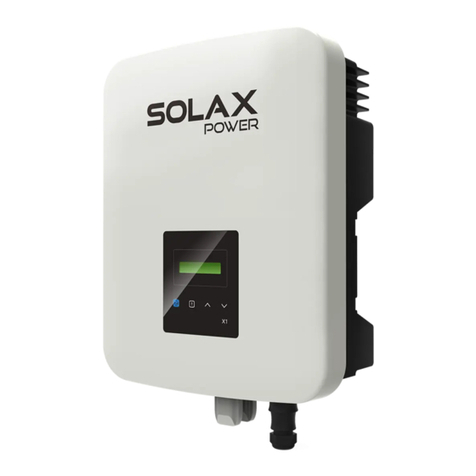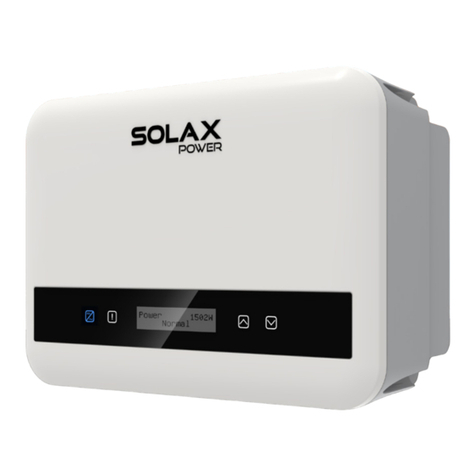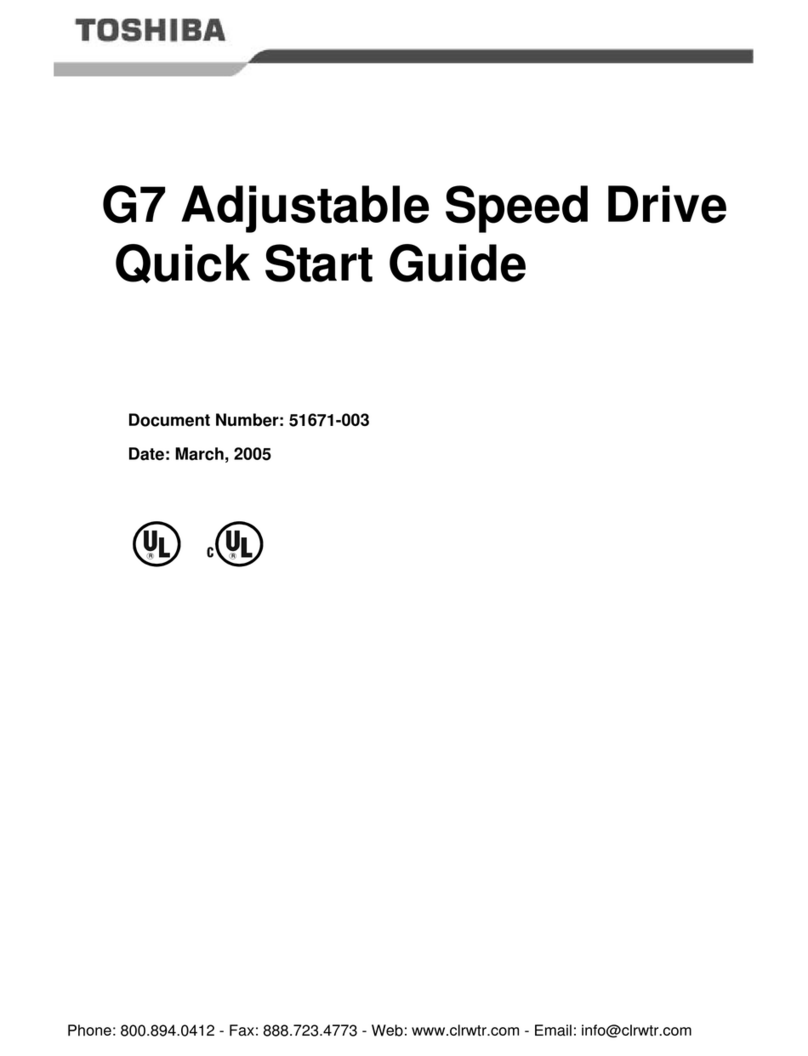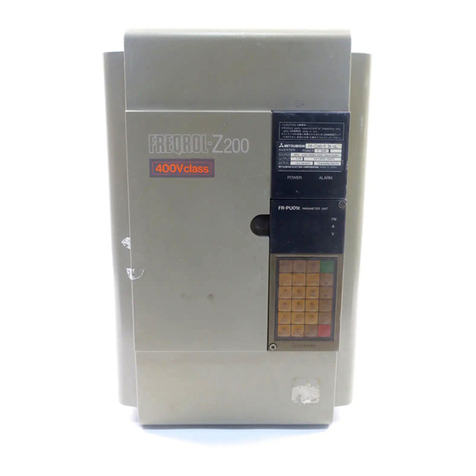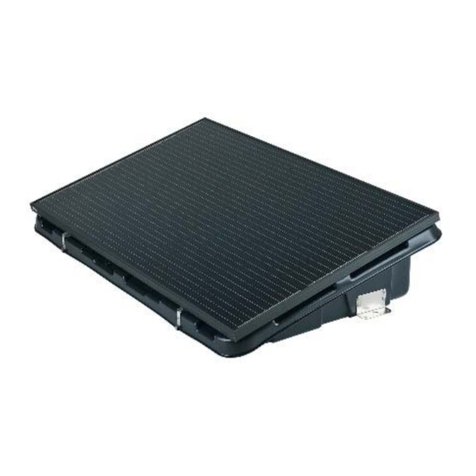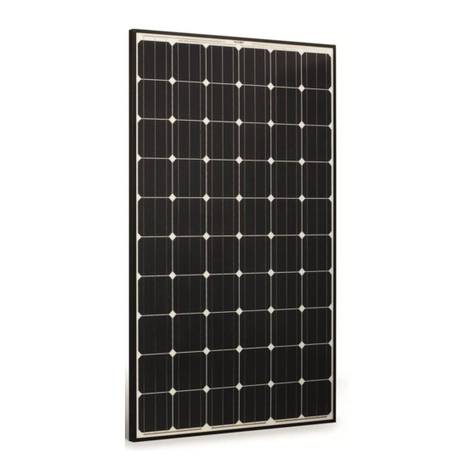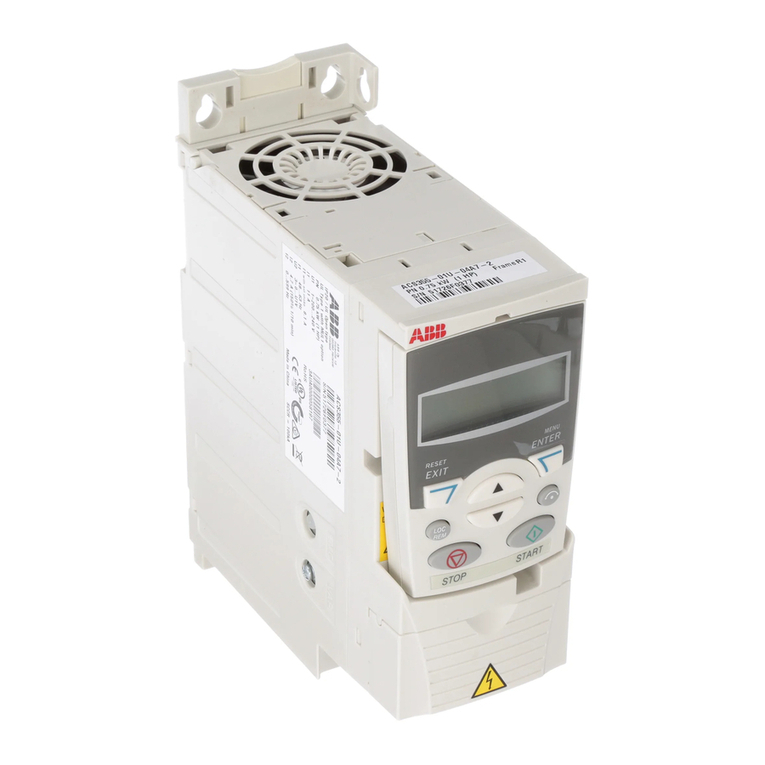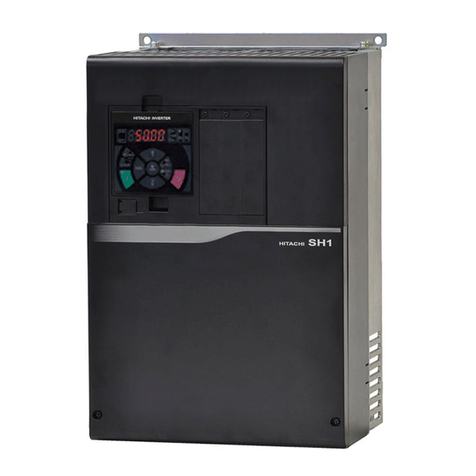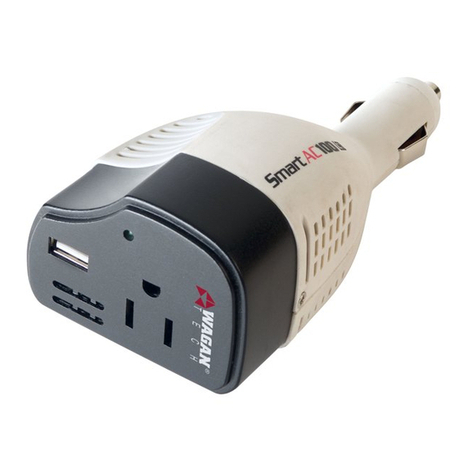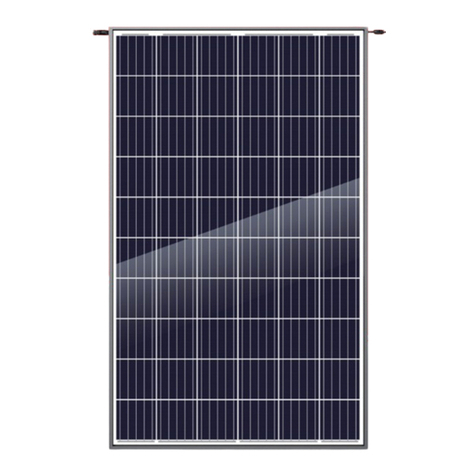Main cable(AC line cable) shall be short circuit protected and thermal overload
protected.
Always fit the input cable with fuse. Normal gGs (US:CC or T) fuses will protect the
input cable in short circuit situation. They will also prevent damage to adjoining
equipment.
Dimension the fuses according to local safety regulations, appropriate input
voltage and the related current of the solar inverter.
AC output protected by external fuse(gG rated current 28 A/250 VAC for 6.0 kW;
32 A/250 VAC for 7 kW; 35 A/250 VAC for 8 kW) provides in all live connections to
the AC supply.
The rated short circuit breaking capacity of the above protective device shall be
at least equal to the prospective fault current at the point of installation. See
section technical data of this manual for details.
AC output cable: Cu; L, N+PE: 2*5.0 mm+5.0 mm for 6.0 kW , 2*5 mm+5 mm for
7 kW and 2*8 mm+8 mm for 8 kW @40 ambient temperature with a max ℃
length of 5 m, with operating time of the fuses is less than 5 seconds, installation
method B2 according to EN60204-1:2006, annex D: cable in conduit cable
trunking system, number of loaded circuit only one. Use H07RNF(cord
designation 60245 IEC66) for an ambient temperature of 40 or less and use ℃
90 wire for ambient temperature between 40 and 60 .℃ ℃ ℃
Note 1: For conditions differing from those mentioned above, dimension the
cables according to local safety regulations, appropriate input voltage and the
load and the load current of the unit.(You can choose a thicker cable but the
fuses must rated according to the rating of the cable.)
Note 2: Fuses must be approved by Notified Body.
Inverter is not provided galvanic isolation from the mains to the PV array,
feedback current to the array is 0 A/250 VAC for 6.0 kW/7.0 kW/8.0 kW, based on
the fuse provided in the mains. Also in the worst case the reverse current
comprises the sum of the short-circuit currents of all intact lines.
Therefore the current-carrying capacity of the components and sub-assemblies
provided in the end-use system(connectors, cables, junction box, switchgear, etc.)
and the reverse current PV modules shall be considered based on the feedback
current and reverse current. The direct current(DC) circuit breaker or fuse
between each solar generator and inverter shall be provided based on solar
inverter input ratings.
Select DC cables based on the above inverter back-feed current and ISC PV rating
and Vmax ratings.
Selection of Fuses and Cables Note!
Earth Connection
Ø
Screw the ground screw with 4 mm inner hexagonal wrench shown as
follows. (torque:1.5±0.2 N·m)
5.5.2 Communication interface
This product has a series of communication interfaces: such as WiFi,
RS485/Meter, DRM and USB for upgrading for human and machine
communication. Operating information like output voltage, current,
frequency, faulty information, etc., can be delivered to PC or other
monitoring equipment via these interfaces.
WiFi(optional)
This inverter provides a WiFi connecting port which can collect information
from inverter including status, performance and updating information to
monitoring website via connecting Pocket WiFi (purchase the product from
supplier if needed)
Connection steps:
1. Plug the Pocket WiFi into “DONGLE” port at the bottom of the inverter.
2. Connect the WiFi with router.
3. Set the station account on the SolaX web. (Please check the Pocket WiFi
user manual for more details) (torque: 0.6±0.1 N·m)
22 23
Installation Installation
If the AC cable you choose is 16 mm or larger, you need
to break the connection between the two rubber rings
which make up the rubber insert as below.





















